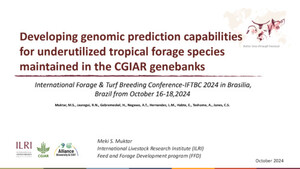
Diversity of microbes colonizing forages of varying lignocellulose properties in the sheep rumen
Abstract
The rumen microbiota contributes strongly to the degradation of ingested plant materials. There is limited knowledge about the diversity of taxa involved in the breakdown of lignocellulosic biomasses with varying chemical compositions in the rumen.We aimed to assess how and to what extent the physicochemical properties of forages influence the colonization and digestion by rumen microbiota. This was achieved by placing nylon bags filled with candidate materials in the rumen of fistulated sheep for a period of up to 96 h, followed by measuring forage’s chemical characteristics and community structure of biofilm-embedded microbiota.Rumen degradation for all forages appeared to have occurred mainly during the first 24 h of their incubation, which significantly slowed down after 48 h of rumen incubation, depending on their chemical properties. Random Forest analysis predicted the predominant role of Treponema and Butyrivibrio in shaping microbial diversity attached to the forages during the course of rumen incubation. Exploring community structure and composition of fiber-attached microbiota revealed significant differential colonization rates of forages depending on their contents for NDF and cellulose. The correlation analysis highlighted the significant contribution of Lachnospiraceae and Veillonellaceae to fiber degradation in the sheep rumen.Our findings suggested that forage cellulose components are critical in shaping the pattern of microbial colonization and thus their final digestibility in the rumen.
Citation
Vahidi, M.F., Gharechahi, J., Behmanesh, M., Ding, X., Han, J.-L., Hosseini Salekdeh, G. 2021. Diversity of microbes colonizing forages of varying lignocellulose properties in the sheep rumen. PeerJ 9:e10463.









